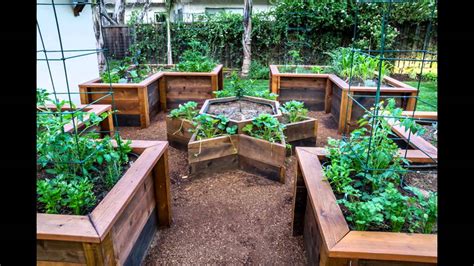What Are The Benefits Of Using Raised Beds For Efficient Water Conservation And Reduced Evaporation?
Raised garden beds are a popular and highly beneficial way to grow crops, flowers, and herbs in a controlled and efficient manner. Whether you're a seasoned gardener or just starting out, creating a raised bed could be just what you need to take your garden to the next level. In this post, we'll delve into the many benefits of raised garden beds, and give you some practical tips and advice for building your own. First things first, what exactly is a raised garden bed? Essentially, it is a bed of soil that is raised above ground level, usually by being contained within a frame or structure. This can be made out of a variety of materials, including wood, stone, concrete, or even recycled materials such as old tires. The bed is then filled with soil, which can be a customized mix of different types of soil and compost to suit the needs of your specific plants. One of the main benefits of raised garden beds is that they offer much greater control over the growing environment than traditional in-ground beds. With a raised bed, you can create a specific soil composition, ensure proper drainage, and even adjust the pH level of the soil if needed. This means that you can tailor the growing conditions to the specific needs of your plants, making them much more likely to thrive and produce healthy crops. Another benefit of raised garden beds is that they can help to reduce the workload and physical strain associated with traditional gardening. Since the bed is raised off the ground, it is easier to reach and tend to without having to bend over or kneel down. This can be especially beneficial for older gardeners or those with mobility issues. Additionally, raised beds can help to minimize weed growth and pest infestations, since the surrounding frame or structure can act as a barrier. When it comes to actually building your own raised garden bed, there are a few key things to keep in mind. First and foremost, you'll want to choose a location that receives adequate sunlight and has good drainage. You may also want to consider the size of your bed and how many plants you want to grow, as this will determine the amount of soil and compost you'll need. Once you've determined these factors, you can start to think about the materials you want to use for your bed frame. Wood is a popular and versatile material for raised garden beds, and can be purchased in pre-cut sizes or custom cut to fit your specific needs. Cedar and redwood are both popular choices for their durability and resistance to rot and decay. However, you can also use other types of wood, such as pine or spruce, if you seal them properly to protect them against moisture and pests. Stone and concrete are also common materials for raised garden beds, and can offer a more permanent and decorative solution. However, they can be more expensive and labor-intensive to install than wooden frames. If you're looking for a more affordable or sustainable option, you can even make your own raised bed out of recycled materials such as old pallets or cinder blocks. Once you've chosen your materials and have your frame assembled, you can start filling your bed with soil. A basic mix of topsoil, compost, and vermiculite or perlite is a good starting point for most plants, but you may need to adjust the mix for certain types of crops or soil conditions. You'll also want to make sure that the soil is level and compacted, and that there are no air pockets that could cause settling or drainage issues later on. When it comes to planting in your raised bed, there are a few additional tips and tricks to keep in mind. First, it's important to properly space out your crops to avoid overcrowding and competition for resources. You'll also want to mulch your bed to help retain moisture and suppress weeds. And finally, be sure to regularly water and fertilize your plants, as the increased drainage in a raised bed can cause the soil to dry out more quickly than in-ground beds. Overall, the benefits of raised garden beds are clear: they offer greater control, efficiency, and convenience than traditional gardening methods. By building your own raised bed and following these tips and guidelines, you can create a thriving garden that will produce healthy and bountiful crops for years to come. 



bed benefits vegetables wht veggies planters

:max_bytes(150000):strip_icc()/english-walled-garden-182176007-7fcda68d9dbe4ba090fe321dadc276a8.jpg)
:max_bytes(150000):strip_icc()/cardinal-flower-5b7d839046e0fb00824966fb.jpg)
